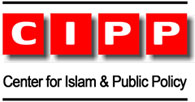An interview with Zahid H.Bukhari, Director of the American Muslim Studies program at the Georgetown University, by Rita Rudusa.
You have conducted a study of Muslims living in the US[1]. What were your key findings about the distinctive characteristics of an average American Muslim?
During the Project MAPS we came up with five characteristics of the American Muslim community. But before describing them, I would like to say, briefly, that nobody knows the exact number of American Muslims, because this question is not asked in census. There are different estimates — some say there are about six million, in 1989, The New York Times published that figure. Some scholars contest it and think there are three million. Interestingly, Hollywood also mentioned American Muslims. In the movie Syriana one of the characters says that there are ten million. So, we are between three and ten million (laughs). However, there is consensus among scholars that numbers are growing.
Read the rest of this entry »
